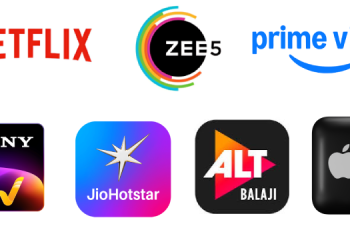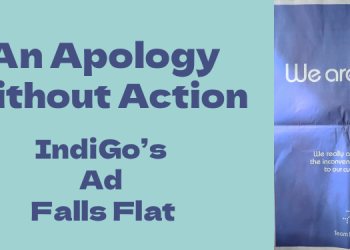Maruti continues to be the market leader with less than 45 pc share of Indian passenger vehicles sold in 2022. But for the semiconductor shortage, it would have bettered the 15 pc growth it registered. If one takes only non-SUVs, the company’s share shoots up to 65 pc. In the entry level segment, it has a whopping 90 pc share.
Kia (40 pc), Mahindra (65 pc) and Tata Motors (59 pc) saw better growth in 2022 albeit on smaller bases. What perhaps helped them was that the overall share of SUVs among passenger cars has grown to over 40 pc. What perhaps did not help Maruti is that the share of the entry level segment dropped.
This is not a trend Maruti Suzuki is willing to miss. Adding to the Brezza and Grand Vitara come April 2023 will be Jimny and Fronx from the Nexa stable. Maruti’s stated target is to increase market share to 50 per cent, by growing SUV share from 11pc last year to 33pc by FY24. The launch of Jimny and Fronx are unmistakable moves towards this. The new SUVs have received over 40,000 bookings (end-March) though prices have not been revealed.
In a freewheeling conversation on the brand’s sustained leadership, growing competition, perspective on EVs, growing CNG adoption, the SUV challenge and opportunity, and more, Shashank Srivastava, Senior Executive Director, Maruti Suzuki India Ltd., tells us why the behemoth is confident of reclaiming 50 pc share – a share it had snared from 2017 to 2020.
Every other vehicle sold (over 40pc) across the Indian market is said to be a utility vehicle. Brezza sold 1.15 lakh units in 2022 putting it in the top 10. Would you consider Vitara and Brezza to be successful?
Yes, in fact the Brezza is the number one SUV in the country today. Brezza was introduced in 2016. Brezza volumes are almost 15,000 units a month now. As far as Vitara is concerned, we received more than 1,32,000 bookings. Now we are getting much better availability after some production issues in the past year.
If you look at our market share in February, it was just under 18 pc (in SUVs). Overall last year, it was only 11 pc in the SUV space. Fronx and Jimny sale is going to start in April. With these four models we are hoping to increase from the current 17.7 pc to 33 pc.
How do you see this 33pc share split within the MSIL SUV models, existing and new?
Existing should be about 2/3rd with a third coming from Fronx and Jimny.
“What stories will they tell about you” is a very powerful and different piece of communication for Jimny. Who are the consumers the brand will attract?
Jimny is in the compact SUV segment. It’s a lifestyle vehicle and it is for consumers who not only do off-roading, but also want to project that sporty performance image.
The hashtag ‘What’s your story’ is basically because Jimny has a legacy. It is actually a 50-year-old brand. This is the fourth generation Jimmy we are talking of and the first one with five doors. It’s a SUV legacy of Suzuki starting in 1970. And there are lots of really powerful stories woven around Jimny.
Three of the stories have been made into a TVC. The first is of a young couple in South Africa. They decide to conquer seven mountains in the high ranges of Africa. These are in very trying and tough conditions, bad roads, etc. But this couple made it and later they got married as well.
The second is about the discovery of some human bones which are almost a hundred thousand years old at an excavation site. The site is quite deep and you have those circular roads going down. These are like non-metal roads, so while you can go down, coming back is a little difficult because there are many twists, curves and turns on not-so-good roads, and there is a steep incline as well. And that was done, in the Jimny.
The third, which is most emotional, is also the most recent story. There was a big snowstorm in 2021 in Spain and Portugal. Life came to a standstill. Even emergency services could not be given because ambulances were also stuck. There was this Spanish lady, Maria, who gave birth in hospital and they wanted to come back home because hospital services were being affected, but no vehicle could reach them. Suzuki proposed to take them back home in the Jimny and even though there was many feet of snow, they could come back home. And in fact, that baby is named Suzuki (colloquially) in the locality.
These show the type of prowess in terms of off-roading and difficult condition driving Jimny has. What we are saying is that you could also have very good stories to tell when you have the Jimny.
Within your UV folio, who will each brand address?
The Fronx is also in the compact SUV. But while Jimny is a lifestyle vehicle, this is a vehicle which appeals to the urban, young, technology-oriented consumers, who want something little different from the existing boxy type of SUVs. These boxy SUVs, which is the traditional design of SUVs, whether it’s the Brezza or the Venue or the Sonet or the Punch, they are all in that category. These (Fronx consumers) are the guys who want something different, something new but very technologically advanced, and they are willing to pay more for those features and design.
The Brezza is obviously appealing to the people who want a ‘hot’ vehicle in the sense that it’s quite good looking and also has very good performance. It has a 1.5 litre engine which is the largest in its category.
And finally, the Grand Vitara. It is very fuel efficient and there is a range of SUVs within the Vitara category. So you have a four wheel drive, manual transmission, automatic transmission, a strong hybrid. This is meant for people who want a slightly larger SUV.
What explains the consumer shift to SUVs? Does it have to do with space / comfort / lifestyle shifts? Is this irreversible or a trend that will be cut off by another?
This is a global trend, it’s not just India. We have seen it in the US, China, Europe, in Latin America and other parts of the world. In India specifically, the growth in SUVs has been really fast. This segment was just about 16 pc of the overall market a few years back (2017-18), and is now about 40 to 45 pc. It’s largely because of three or four reasons. One, the upright driving stance which an SUV enables, which gives you a feeling of having a command over the roads. It gives that feeling of status. And that is something which research shows is the biggest reason why SUVs are being preferred.
Secondly, it has high ground clearance which means that it can go over potholed roads, bad roads. It’s quite common to find bad roads in India.
The third is the flexibility of space. When you compare it with a sedan for example, in the case of an SUV you have more flexibility of interior space. You can keep not only luggage, but because of the height you can actually keep many things which won’t fit in the sedan’s dicky space – like a golf bag, for example.
Also, because GST is less on the compact SUV, we now are able to price those vehicles very similar to the premium hatches and entry sedans. Therefore there is cross consideration of consumers because of overlapping price points. People who were earlier going for premium hatches and entry sedans are considering SUVs. That is why entry level SUVs are now the largest segment in the industry.
Whether the trend is reversible… of course nothing is permanent. The projection for the next few years is that this SUV trend will continue to grow. But I think it’s going to sort of play to around the 50 pc mark. And then of course as it always happens, some new categories come in. Earlier sedans became large, they were actually 24 pc of the market at one point. Today they are 10 pc. MPVs, which were just about one or two percent of the market, are now expected to be 9 to 10 pc. So different categories over different years depending on the economic conditions, consumer preferences, fuel choices, type of powertrain have seen variations. I guess for SUVs also at some point of time down the years, you will see this trend change in favour or something different.
WagonR (over 2 lakh units), Baleno (1.68 lakh), Swift (1.64 lakh) were reported to be the three top selling cars of 2022. Alto was said to be the only model in the top 10 that saw a marginal drop in sales. Is the first time car buyer today seeking a non-entry level car? How will this impact the industry and your approach? What is the future of the entry-level hatch?
The entry level hatch is still a very large portion of the passenger vehicles at about 36 pc of the industry as compared with the 43 to 44 pc for SUVs. This year hatches have grown 20 pc and it is expected that the segment volume will be about 30,60,000 units which is very substantial. In India, the first time buyer has remained consistent at around 45 to 47 pc of the market. Some of these first time buyers are also directly considering other models which may be entry sedan or entry SUV. That percentage has definitely gone up.
The slight decline in the entry level segment buyers has got something to do with the affordability. The price increase in percentage terms has been higher for entry models and hatches. This segment is very sensitive to price – the price elasticity is very high. That’s the reason why we have seen a relative decline. This segment was about 44 to 45 pc of the market earlier, and is now about 36 pc. The decline is largely because the income levels haven’t gone up in this segment compared with the price levels. In other words, the affordability factor has come down.
Of India’s population, 65 pc is less than 35 years of age. New buyers keep coming into the market. Because it’s a growing economy, transportation requirements will always be there. Our public transport is not so good, so personal transportation will still be in demand. And all these people cannot really afford large cars. Therefore, I guess once the economy bounces back (as it is already doing), we will see the small cars also witness good growth. And remember, this year, as I said, 20 pc growth has been seen in this segment. That is also probably going to continue going forward if the economy continues to grow.
Maruti’s advertising underlining its vast service network is still fresh in memory. Is that an advantage even today? What is the spread?
Yes, it is an advantage. We have close to 3,700 outlets. We have a Nexa channel where we have about 460 outlets, we have an Arena channel which was a traditional channel which has been revamped to about 2,700, and then we have about 400 outlets for commercial vehicles. We also have, in addition to this, about 550 outlets for our True Value (used cars). We are spread across 2,000 cities. That’s obviously a very big advantage.
Though people say that now a lot of people are preferring to buy through digital, we have found that while the discovery of the car choice may be done through digital means by many, a majority of them would actually like to physically test drive and see the car before they buy. In that sense having a large network obviously helps. It’s not just an India phenomena, it’s across the world, even in richer countries. Generally speaking, the house and car are two of the largest purchases in terms of value that an average Indian makes. Here it’s also a discretionary purchase.
The Arena vs Nexa segmentation. Tell us about the thought process. Are some models sold in both? Is there scope for dissonance in the minds of consumers?
There is no common model sold in both channels. It’s either sold in Arena or Nexa. I don’t think there would be dissonance because the brand positioning of both are quite different. They appeal to different types of consumers. There could be some overlap, but no dissonance as such. Nexa was first designed in 2015-16. We knew this customer is likely more aspirational, more global, and therefore requires more attention and pampering and we therefore conceived of the Nexa channel as something for this more sophisticated buyer who’s looking for good automotive buying experience not just the product. And of course Nexa’s product design language, its infrastructure, the elements of consumer interface are quite different. They are largely monochrome, straight lines, whereas the Arena channel is more about dynamism, connectedness, young and that sort of image.
We have added so many new vehicles now in Nexa. It now has the Jimney and Fronx as well, besides Grand Vitara, Ignis, Ciaz, XL6. Nexa is the fourth largest brand of automobiles in our country, independently. First is Maruti Suzuki, second is Hyundai, third is Tata and fourth is Nexa. In many states of our country Nexa is third already and we want it to become number two next year.
We have these three new products in our portfolio; all of the three are in the growing SUV space and so should give us good volume – the Grand Vitara, Fronx and the Jimny. Nexa this year has seen 47 pc growth so far, and we expect to close Nexa volumes this year at 3,70,000 against 2,55,000 units last year. And next year we are planning in excess of 6,00,000.
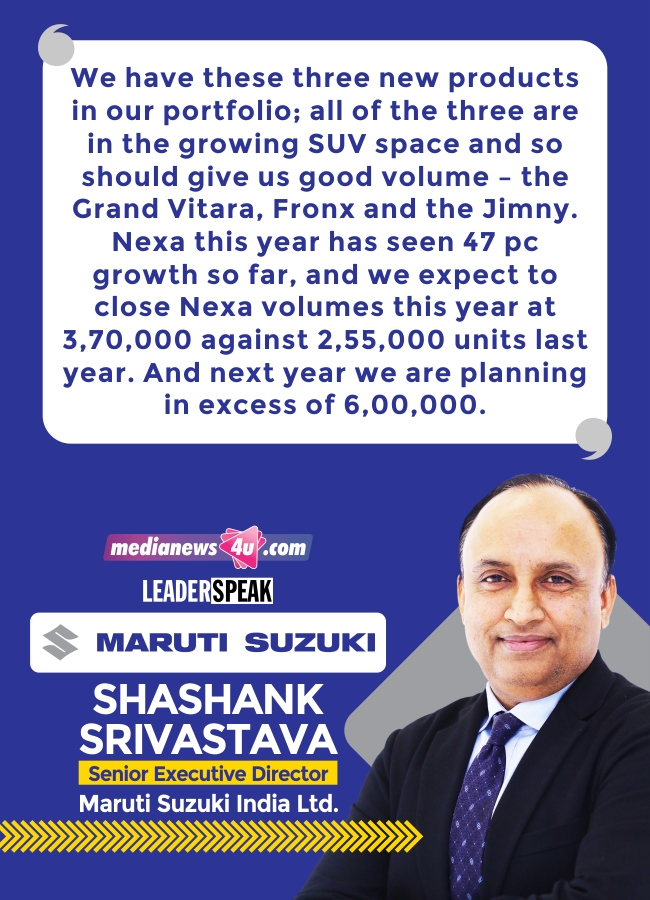
The Nexa consumer we have found is more urban, more aspirational because they take the higher variant vehicles more, and third, the average monthly household income (MHI) for a Nexa customer is much higher compared with an Arena customer. These are some of the differences and that’s why we are confident that we can address both these sets of consumers in our pursuit of getting that 50 pc market share.
Your stated position is that the time is not yet right for EVs and by 2025 you will enter the space, with multiple models by 2030. Could one say you are trying to leverage the last-mover advantage in the space? Is there an opportunity cost?
The market itself is small at the moment. There seems to be some consensus in the industry that going forward EVs will become mainstream. But right now the penetration of EVs in our country and in fact across the globe is not so high.
Last year 21,000 passenger vehicles sold in India were EVs whereas the market was 30,70,000. This year 50,000 EVs will be sold, whereas the market will be about 39 lakhs. So that’s a small percentage. It hasn’t had so much adoption because of two factors – initial cost of acquisition of EVs is very high (roughly 40 to 60pc more expensive than an ICE vehicle).
Second, the charging infrastructure is not so good. That requires development. This lack of infrastructure is giving consumers range anxiety.
In our studies, we have seen that the adoption of EVs goes up in countries once it crosses a threshold of about 3 to 4 pc. So then charging infrastructure also gets developed a little better. Now it is less than 1pc or around 1pc in India. It should go up to 3 to 4 pc in 2024-25, and then up to 17 pc by 2030. That’s the reason we have planned to introduce the EV in 2024-25.
The 2030 projection is 6 million cars overall, out of which about a million will be EVs accounting for 17 pc. The question is, what do you do for all those vehicles you will sell from today till 2030? So about 43 million passenger vehicles will be sold till 2030, out of which about 4 million will be EVs. You need to do something about the emission levels of the other cars, the 39 million cars, by adopting cleaner fuels like CNG, going for strong hybrid vehicles, use of blended fuel, ethanol-based fuel, biogas and so on. So we are doing those projects.
Meanwhile, at the same time, as we said, the cost of acquisition of EVs has to be brought down. Largely it will be the battery cost which will determine the price of the vehicle because 50 pc of the cost of making an EV is actually battery cost. And towards that end Suzuki has invested almost Rs. 10,000 crore in localising the battery and battery-related products in India. When we have that, then you can see a reduction in the battery prices, which would then make it possible to competitively price EVs. It should then help the adoption.
It’s not a question of just bringing in technology but also technology at scale. Maruti Suzuki is looking at scale, not just showcasing the technology. That’s what some people say – that the optics don’t look good, we are one of the late movers. I can tell you if it’s a choice between optics and customer convenience, 100 times out of 100 Maruti Suzuki will prefer customer convenience. We can always introduce an electric vehicle that some of the competitors have, but then customer convenience also has to be seen – charging infrastructure has to be there, pricing has to be right, scale has to be good and that is what we are trying to do with our first electric vehicle coming out in 2024-25.
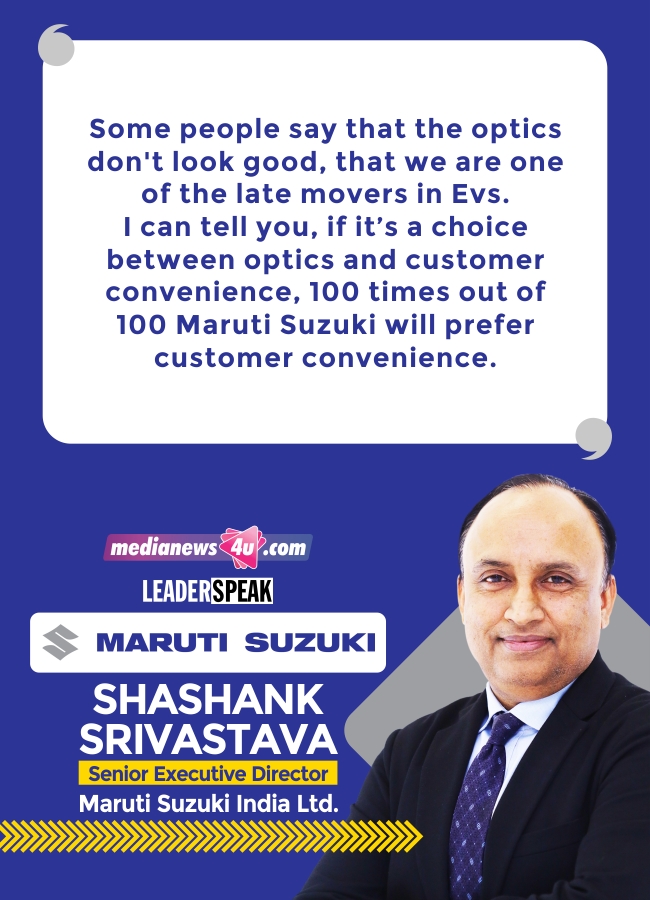 The chip shortage and wait times – when will they be resolved? Could delays prove to be a dampener for sales?
The chip shortage and wait times – when will they be resolved? Could delays prove to be a dampener for sales?
It is still there. It started in August ’21 for us in India and at that time we had just about 40 pc of the plant production because of semiconductor then gradually the situation became better. Today we are at around 94 to 95pc of our plant capacity but the thing is the problem still continues. In Q3 Maruti Suzuki lost about 47,000 vehicles due to this, in Jan-Feb also we lost. In fact in March the loss of production is higher than January and February. So the problem still persists but thankfully now it is related to a fewer number of models. There are some models which are readily available because they are able to produce much more than the demand but in some models because of the semiconductor issue continuing we are not able to produce the desired numbers. That is why you would find two different sorts of messages coming from the industry. On the one hand you will see some models having large discount levels and low waiting periods and on the other hand you will have some models which have large waiting periods and the pending bookings are also very high. I guess the problem will continue for some more time.
A sizeable advertising budget that will go up, with almost a third being spent on digital, is what you see in FY24. How big is Television and what is the relevance of print for detailing product attributes?
We spend on advertising via television, print, OOH, radio and digital. Print, television and digital are roughly equal with television being a little higher. These cover about 94 to 95pc of our total spend and the balance goes into OOH and radio. Digital has been growing fast.
Our expenditure in automobiles largely falls into about four buckets. The first is about new product launches where you want to position the new brands like Jimny or Fronx. That entails expenditure on positioning the brand itself. The target is also about how to increase awareness and build that reach and frequency. We have 14 existing brands. We need to have middle level funnel activity to build consideration and preference for those. Finally at the lower end of the funnel, we use print (and digital) to convert the consideration and mindshare into actual market share.
Digital is also getting bigger because earlier it was appealing to the lower end of the funnel, but now it appeals to the entire funnel. This means it can be used for greater awareness and building of reach-frequency. At the same time for hyper local it’s great for conversion, that is to build market share.
This year we are projecting about 15pc increase in advertising spends because we have some new models coming up. We need to spend on brand positioning. So overall I think the expenditure should be in that range of Rs.1000 to 1,200 crores in overall marketing spends. That is one of the major investments we make in the market for achieving our volumes.

Advertising like Maruti’s ‘Kitna Deti Hai’, ‘No matter where you go’, ‘India comes home in a Maruti’ were appreciated and I am sure delivered for the brand. There is a view – and you may not appreciate it – that barring exceptions, cars sell despite the advertising. Cars sell on product, pricing and features – is that killing the creative spark?
I think the jury is still out there. I don’t think the issue has been settled. A lot of people say in good times when the market is good you want to advertise because you are feeling good, you have lots of money to spend. And in bad times you have to. So in good times you feel like doing it and in bad times you anyway have to do it – and therefore the advertising keeps going on. That’s one view.
In cars there has to be clarity in the consumer’s mind when the number of products increases. It’s not really a commodity. It’s a high discretionary product, so often people buy it because it may reflect, add value to your status and what people think about you and so on. In a market where you have different segments, different types of consumers, different elements of the car appeal, it’s not about functionality it’s also about aspiration. If it was only a transportation from point A to B, any car would suffice. But if it is about aspiration and reflection of your personality, sometimes you associate with what values you stand for. Some people buy green cars (electric, hybrid or CNG vehicles) that stand for their value of protecting the environment. Or they may want to make some other statement about what they stand for. So you need to therefore bring out these core brand values of different cars. That can be done through imagery, it is best through either videos and or even photographs, but provided you bring it in a form that the consumer understands and is attracted to.
That is what the creatives do. Creatives, obviously, are very important. I don’t think creativity is going to go away because as long as you need to differentiate your product beyond functionality, you need to create imagery and that is best created by good creatives.
How many of your walks-ins / buyers are women today, against, say, 10 years ago? Or families?
Families were always there in India. The discovery of the car could be at home through digital means these days but ultimately when the choice of colour, choice of actual product happens, they want to see, smell the leather or kick the tyres as they say. So there of course families are involved. As good sales people, sometimes you have to identify who the decision maker is. We now have more use of technology to determine who the decision maker is. Earlier there used to be stereotyping that in terms of technology and type of car it is the male who decides and the female will decide the colour and the other more emotional aspects. It’s no longer true. We sometimes use AI tools to determine who the actual decision maker in a family is. Is it the kids, man or woman? People say why do you want to have these AI tools to decide who is the decision maker – it is the woman, always! Actually, it’s a mix.
There are families where the guy decides completely and where the woman has the veto as always. That’s another stereotype that’s not going away easily in our society. It also depends on the economic situation and the social milieu in which we are operating. Those things are changing, women are becoming more independent, they are more economically independent also, and therefore having a larger say in the choice of products and in fact the usage of products.
The percentage of working women has increased drastically. Ten years back things were different. These women also have to travel to work and obviously that means that they will be using cars or transportation products and that is also reflected in the percentage of women buyers, which has gone up.
In the US more than 50 pc of the buyers are women whereas in India it is still in the 12 to 15 pc range. It has gone up over the last 10 years when it was 5.5 pc. In some models it’s higher, in some models it’s lower. But as women get more empowered in our economy, in our society, obviously they would also become a larger percentage of the buyers in the car category.
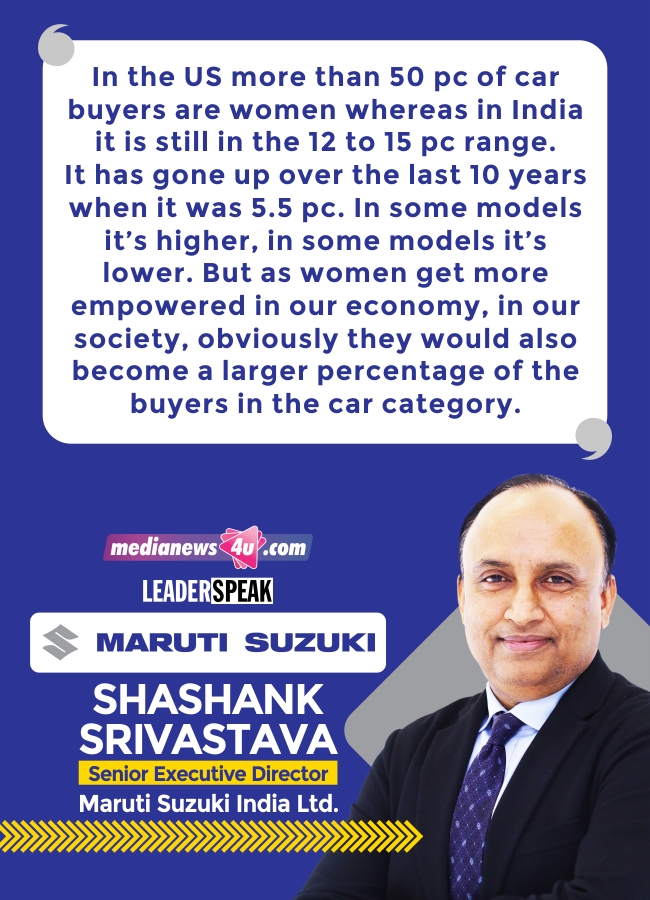 Resale value was a big consideration once. Is it, still?
Resale value was a big consideration once. Is it, still?
Yes, of course. People do look at the resale value of the car and that is where Maruti Suzuki has an advantage. We have seen the resale value of Maruti cars for a similar age or number of kilometres run is much higher than a competing model. You can always be sure that when you replace your car, you get good value. Exchanging your old car and upgrading to a new one is about 25pc of the market. It’s an important consideration in the buying criteria anywhere.
We have a whole lot of car classifieds sites and apps that have come up. Have they had any impact on new car sales or resale value, in your view?
No, not really, new cars certainly not, because ultimately the product is sold in the showroom or through the showroom. They might be aggregating enquiries at some level and you know dealers might be tempted to buy those enquiries from these aggregators. We don’t encourage those practices because we would rather have a direct connect with the consumer. In fact, 20 years back or earlier we used to have brokers who used to be (like) aggregators. They would know the consumer and they would negotiate with the dealer. That’s not good because when you are directly in touch with consumers, you can give them the best price, best services etc. rather than having someone in between.
When we compete in the pre-owned cars business, then obviously we compete with those aggregators. The model they follow is different. We buy the car, repair it, make it better, give warranty, free services on it and the documentation is transparent and complete. Aggregators are simply providing a platform for people to put their car for sale and others to look at it and buy, and there is a small percentage that they take as commission.
Selling in our True Value business is not really an issue because people know that these are really good cars. The demand for our used cars is very high. It’s the buying part which is a little different, that is where we are competing with those aggregators you refer to.
All cars sold under MSIL arena are now available with the option of S-CNG technology. How has the response in sales been?
The response has been very good – even this year, when we have seen CNG prices going up. In fact, we will be ending the year with around 3,20,000 unit sales compared with around 2,65,000 that we had last year. Penetration of CNG has gone up to almost 20 pc now from what used to be 3 or 4 pc a few years back. There are two reasons for that. One is the running cost difference. It is still substantially low for CNG, so there is a lot of savings. It’s also a more environmentally-friendly fuel. There is no economic logic for going for diesel but there is a strong economic logic going for CNG. We are targeting to go up to 25 to 26 pc CNG penetration next year.
The digital pathway for consumers to discover and even book has evolved. Yet the experience of the drive remains irreplaceable. What is the role of experiential and in-person events for (i) branding and (ii) product experience?
Experiential is the new mantra for brand building. Our research has shown that from the time a consumer decides to buy a car till the time he actually takes the delivery, there are 26 touch points – from the website, a brochure available for download, access to owner reviews and so on including test drive and delivery. So the delivery and the test drive is physical whereas for all the others we have already given the digital option to the customer. Even for looking at the car you need not go to the showroom. We have a Nexaverse which is a metaverse for both Arena and Nexa where you can actually get digitally transported to a 3D experience, a very immersive experience, but the test drive and the delivery are physical.
In our world we call it not a digital but a phygital experience. We have digitally enabled 24 out of the 26 touch points and two physical touch points remain. We are seeing larger adoption of digital by consumers. Digital enquiries have gone up substantially. It used to be 3 to 4 pc of our enquiries in 2016. Now it’s almost 40 pc. In Covid times, it went up to 50 pc plus. We thought that it might be a temporary phenomena but actually it is irreversible and accelerating. So we are making our systems accordingly for the digital platform.
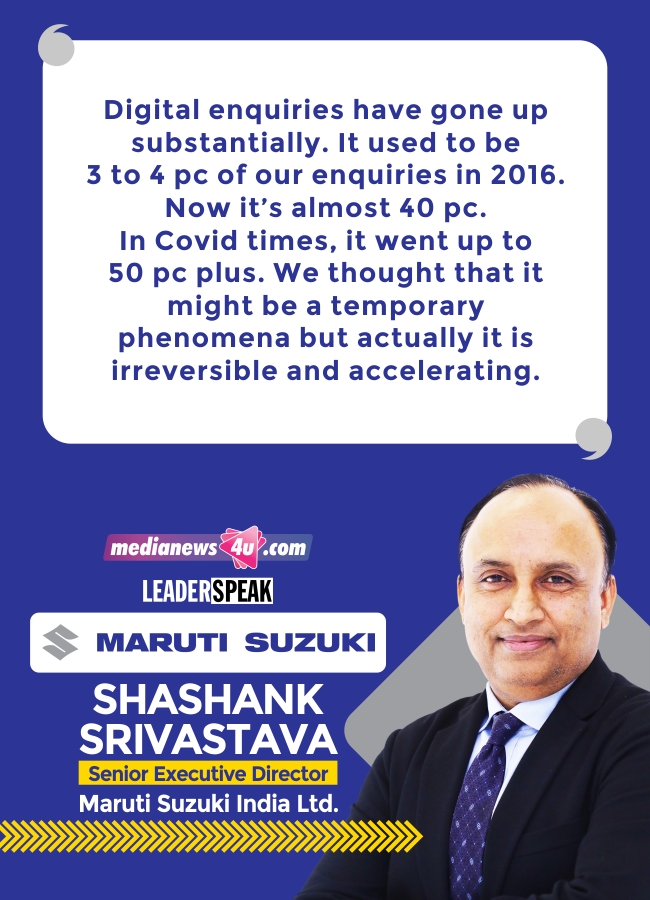 What is the X-factor for being number one and people’s first choice? Is it more difficult today to maintain the position and grow the share than before?
What is the X-factor for being number one and people’s first choice? Is it more difficult today to maintain the position and grow the share than before?
Certainly it’s more competitive and it is becoming more and more competitive – today we have almost 27 car manufacturers in the industry. Our mantra is to focus on the consumer. As long as you focus on the consumer and do what is good for the consumer, it will be good for you as a company. That’s been our mantra and the reason for our success for all these years, Maruti has always been in the number one position. Of course, it is more competitive, it forces all companies including Maruti Suzuki to be better and that is what has happened.
If you look at the last 22 years (since 2000), our market share has been more than 50pc in four years. All these four years have been in the last seven years – 2017, 2018, 2019 and 2020. There is a myth in the minds of a lot of people: that earlier Maruti was at 70 pc or something (share) and it is now 45 pc. Actually, we have been at over 50 pc on four occasions in the last 22 years and those four occasions have been in the recent past.
We are getting better with more competition; we look at competition as a way to improve. Now we have the SUVs and we want to be number one in SUVs this year. We want Nexa to be the number two auto brand (after Maruti Suzuki).
(First published by The Free Press Journal BrandSutra under exclusive syndication arrangement with MediaNews4u.com. Feedback: [email protected])



